
R134A Pressure Chart Print page / The pressure chart plays a vital role in identifying the
3. Compare the pressure readings to the pressure-temperature chart below. R-134a Static Temperature pressure chart. WARNING: Ambient temp is the temperature at the vehicle under the hood, NOT THE WEATHER SERVICE. R-1234yf Static Temperature Pressure Chart. What static pressures actually means
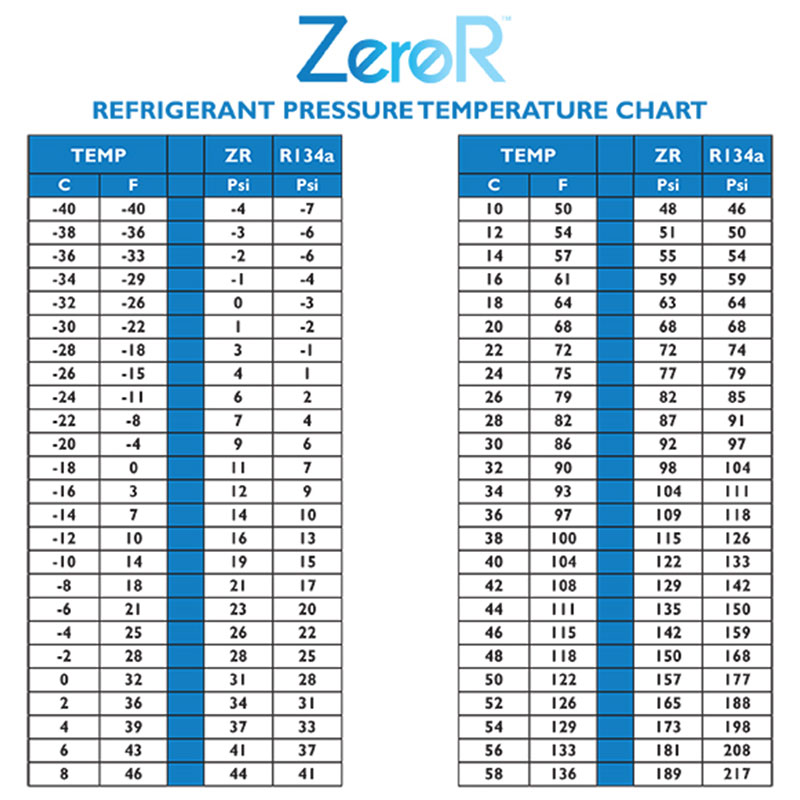
Air Conditioning R22 Pressure Rature Chart Tutorial Pics
At atmospheric pressure, the R134a has a boiling point of -26.8 o C and at 10psi pressure, its boiling point rises to -10.6 o C. If R134a is released into a room at atmospheric pressure and room temperature, it would instantly turn into gas. The temperature and pressure of the refrigerant have a direct relationship.

AC Pressure Test Charts Air Conditioning Hvac
Low pressure: Normal or too low Improper Low & High pressure: Pointers indicate same values on both gauges High pressure: Normal or too low High pressure: Too high High pressure: Normal or too high High pressure: Too low High pressure: Normal You can rely on our AC system expertise backed by more than 95 years of experience in the cooling business.
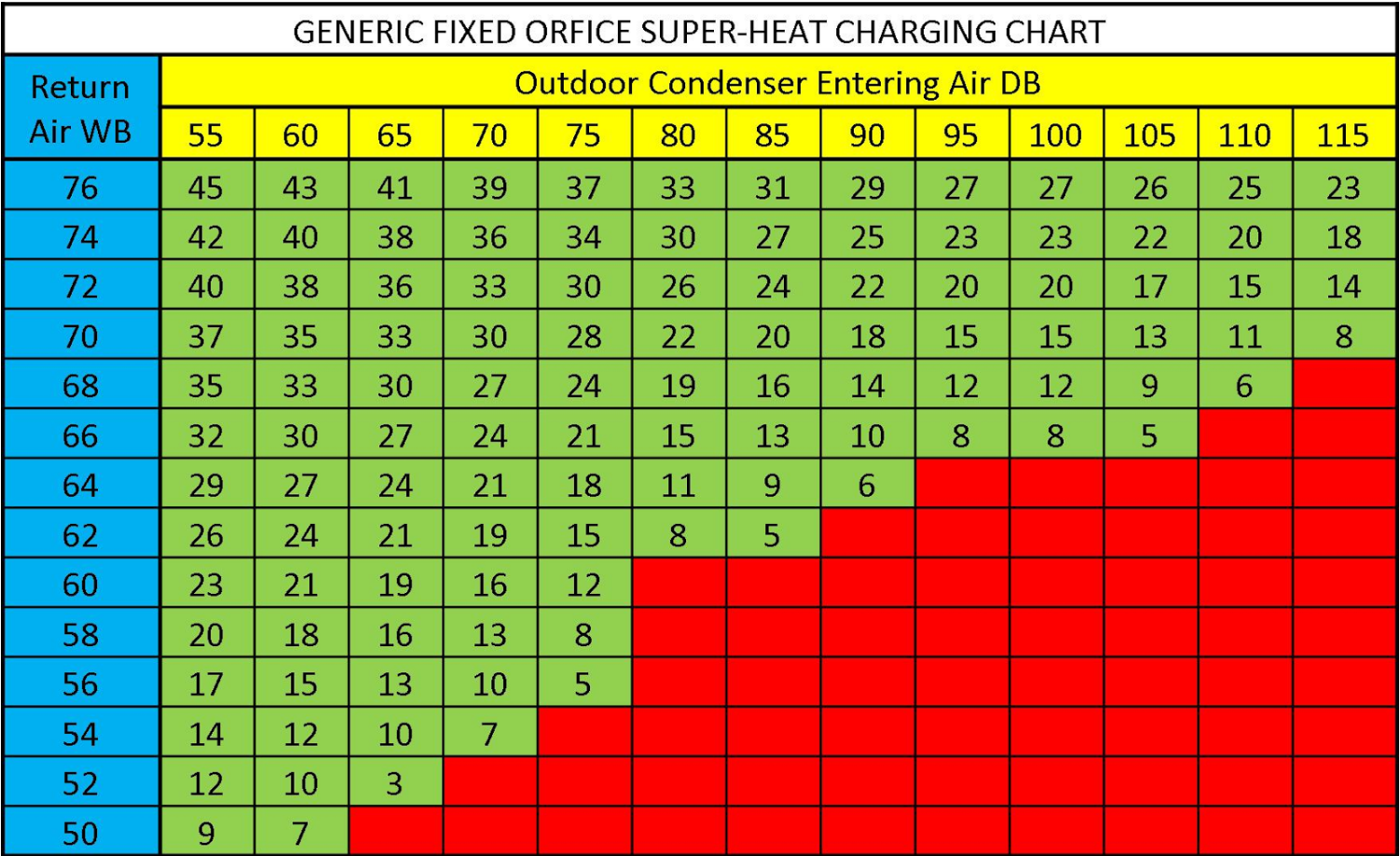
HVAC system acting up? Take a look at its superheat measurements Hvac Brain Northrich Parts
The Pressure/Temperature hart indicates the pressure and temperature relationship for three automotive refrigerants. Vehicles with a model year 1994 and earlier most likely use R-12 refrigerant. If you are not the original owner of the vehicle, however, be sure to check. Some owners have retrofitted R-12 systems to use the later R-134a.
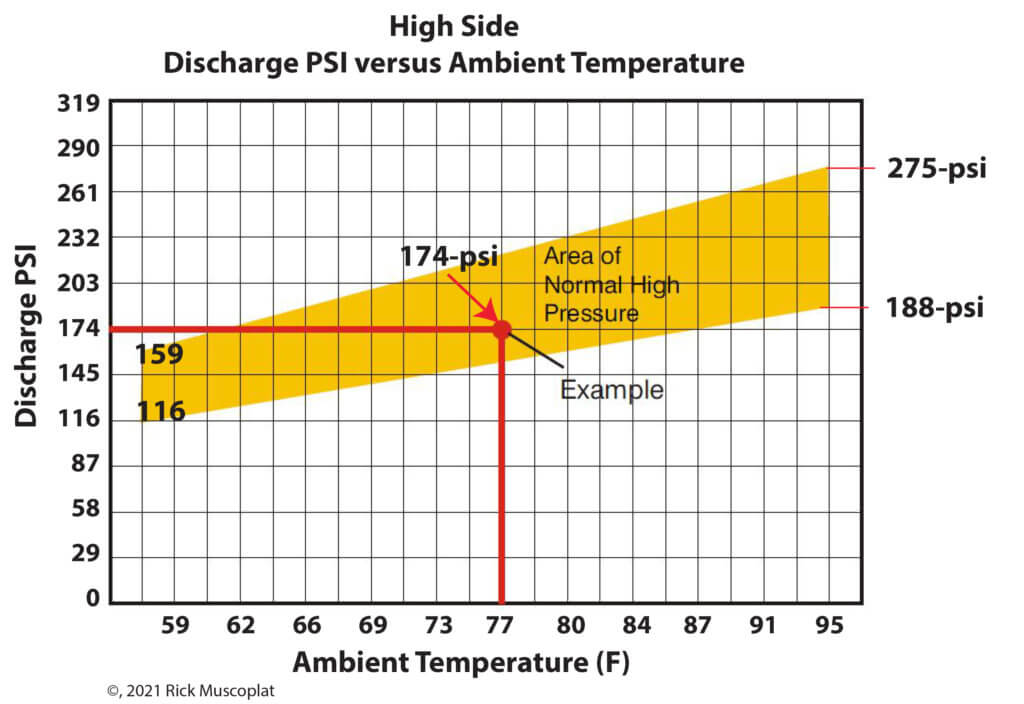
AC pressure gauge readings (2022)
High 150 Low>10. Expansive valve open or leak. Check valve or complete dye test. High 100 Low 100. Compressor does not engage. Check wiring. Note: The most ideal pressure readings are around 150 high and 30 low. Warning: Remember, venting 134a refrigerant into our atmosphere is illegal and bad for our environment.

Air Conditioning Pressure Chart
The system should be recovered, vacuumed (min 20 minutes) and charged. The gauges readings will depend on the ambient temperature. With the A/C turned OFF - On a cold day the pressure will be low, on a hot day the pressure will be high. The table below shows the comparison between temperature and pressure for R134a. AIR CONDITIONING OFF.

R134a Pressure Gauge Readings
REFRIGERANT TEMPERATURE / PRESSURE CHARTS for R-407, R-22, R410a, R-407c, R-134a, R404a, [PDF], Op. Cit.,. Example of a more theoretical air conditioner or heat pump pressure and temperature at the compressor and at the cap tube or thermostatic expansion valve:

dentrodabiblia ac pressure chart
ac pressure chart, understanding air conditioner pressure chart, guide to reading ac pressure chart, ac pressure range, pressure indicators for ac Troubleshooting Common Pressure Issues. You'll find that troubleshooting common pressure issues in your AC system often starts with a careful examination of the pressure chart readings.
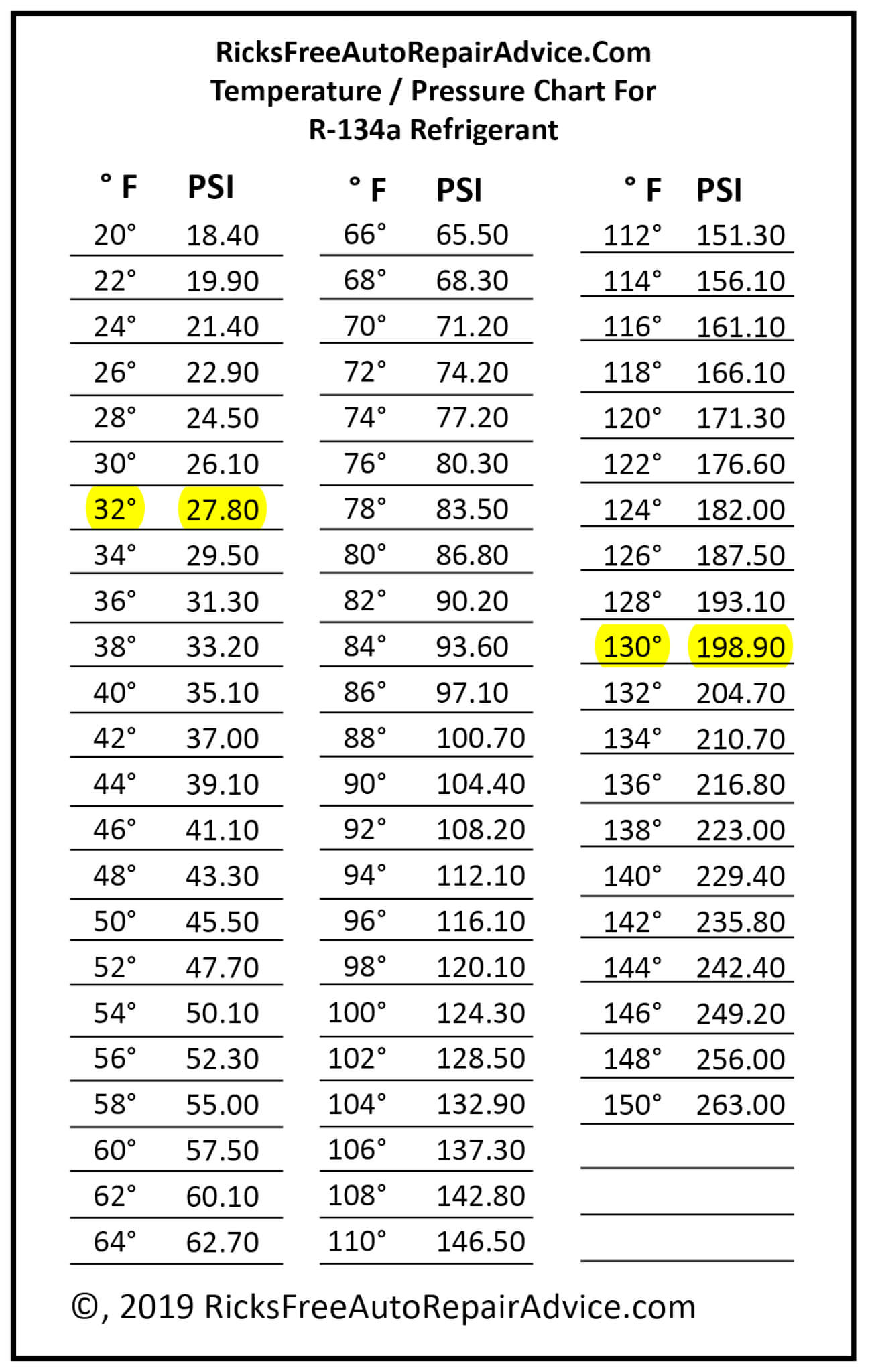
Auto Ac Diagnosis And Repair freshofftheboatdesign
Diagrams: System Pressure Chart; Get a quick look at what an average A/C system looks like, along with the compressor manufacturer and what the specific R-134a requirements are for your car.. High-Pressure Gauge (Puerto de Servicio del Lado de Lado de Alta Presion) 65°F (18°C) 25-35 psi / 172-241 kPa: 135-155 psi / 931-1069 kPa: 70°F (21.

R134A System Pressure Chart Ac Pro For Ac Pressure Chart For 134A eBay Pressure
The pressure for an ordinarily operating R134a is between 22 and 57 pounds per square inch (PSI). Remember, there are two sides to the chart; we have the low and the high. Therefore in a normal R134a, the low-pressure side is 90 degrees or less, and the PSI should be close to 30.

Normal AC pressure gauge readings — Ricks Free Auto Repair Advice Ricks Free Auto Repair Advice
It can be used for recharging refrigerant, or to diagnose an a/c system based on pressure readings from your gauges. Ambient Temperature (°F) Low Side. High Side. 110°. 50-55 psi. 335-345 psi. 105°. 50-55 psi.
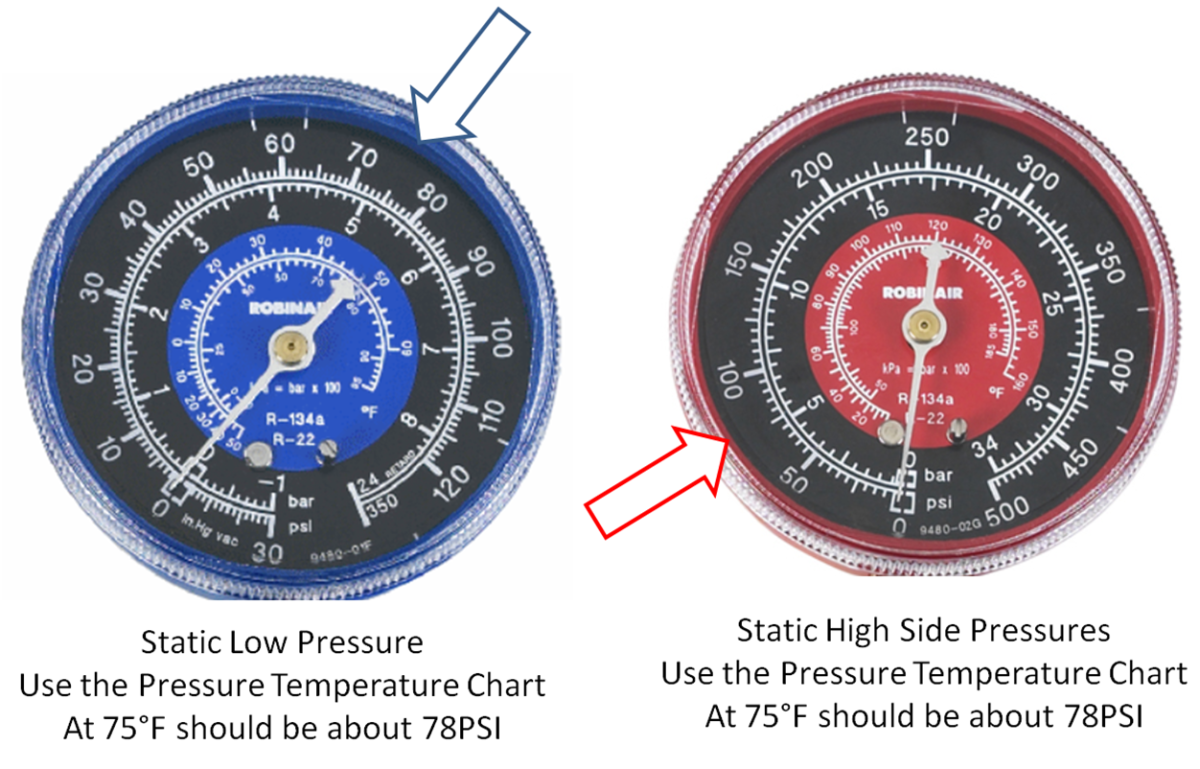
DIY Auto Service AC System Diagnosis by Symptom AxleAddict
An air conditioner pressure chart can serve as a handy reference to help ensure your system is charged with the appropriate amount of refrigerant, avoiding the release of harmful substances into the atmosphere. 2. Reading and Interpreting an Air Conditioner Pressure Chart 2.1. Understanding the Chart Format
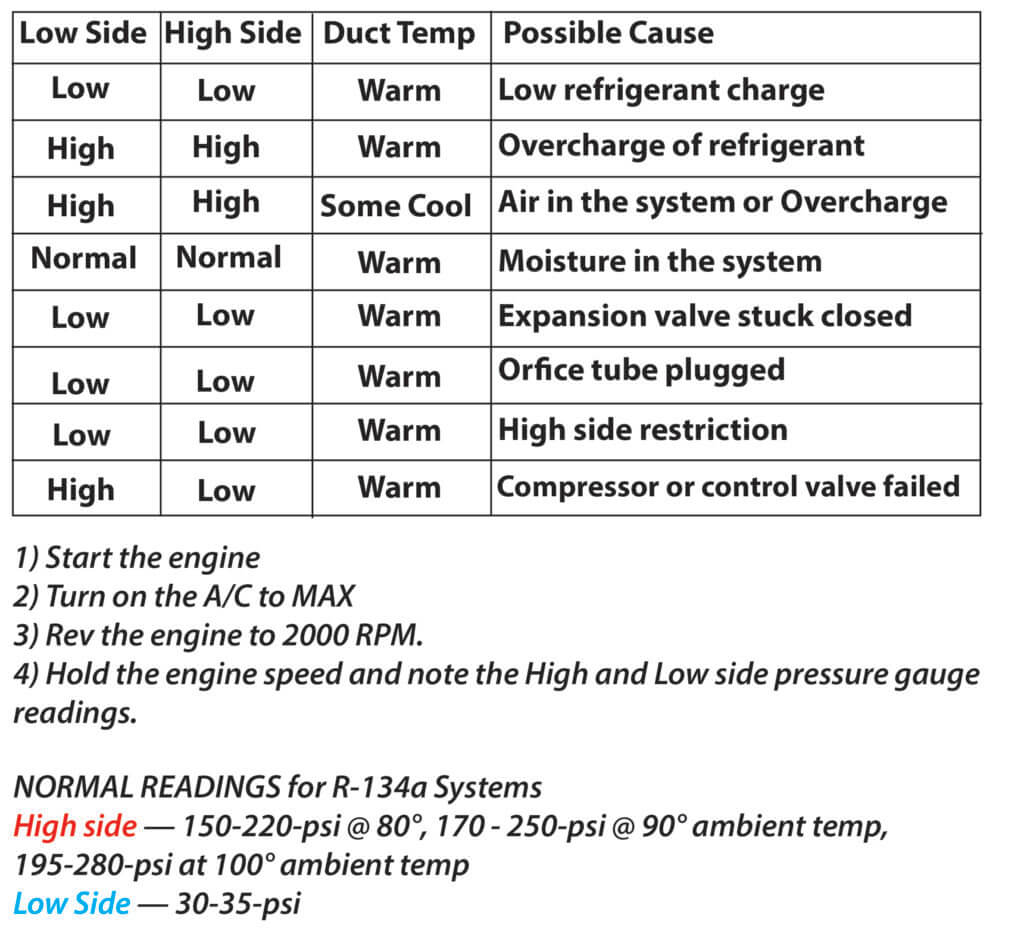
AC pressure gauge readings — Ricks Free Auto Repair Advice Ricks Free Auto Repair Advice
Generally speaking, you want around 27-psi on the low side and 200 on the high side. Why 27-psi on the low side? Because, on an R-134a AC system, 27-psi. on your gauge means the refrigerant will produce about 32°F at the evaporator (as long as the orifice tube/expansion valve is operating properly and there's no air in the system that's artificially inflating the pressure to 27-psi).
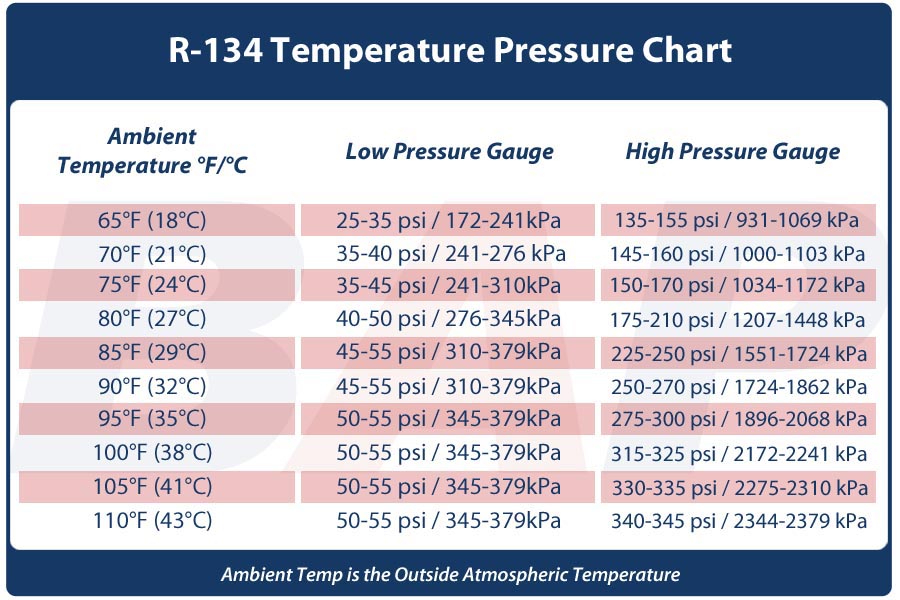
Ready to convert from R12 to R134a Have some questions Page 6
To use the HVAC Technical Support AC Pressure Temperature Chart, Turn unit on; monitor system running approximately 15 to 30 minutes. Take a reading of your refrigerant system pressure (PSIG). Find the corresponding saturated pressure for your refrigerant. Superheat (for units with fixed metering device): Compute the superheat by determining.

AC pressure gauge readings — Ricks Free Auto Repair Advice Ricks Free Auto Repair Advice
The warmer it is outside, the higher the pressure will be. For a general reference, you can check out this chart of R-134a system pressures. If you find you've got a low pressure on the low side of your system, then it's most likely that you've got a leak as that is a common problem in automobile air conditioning systems.
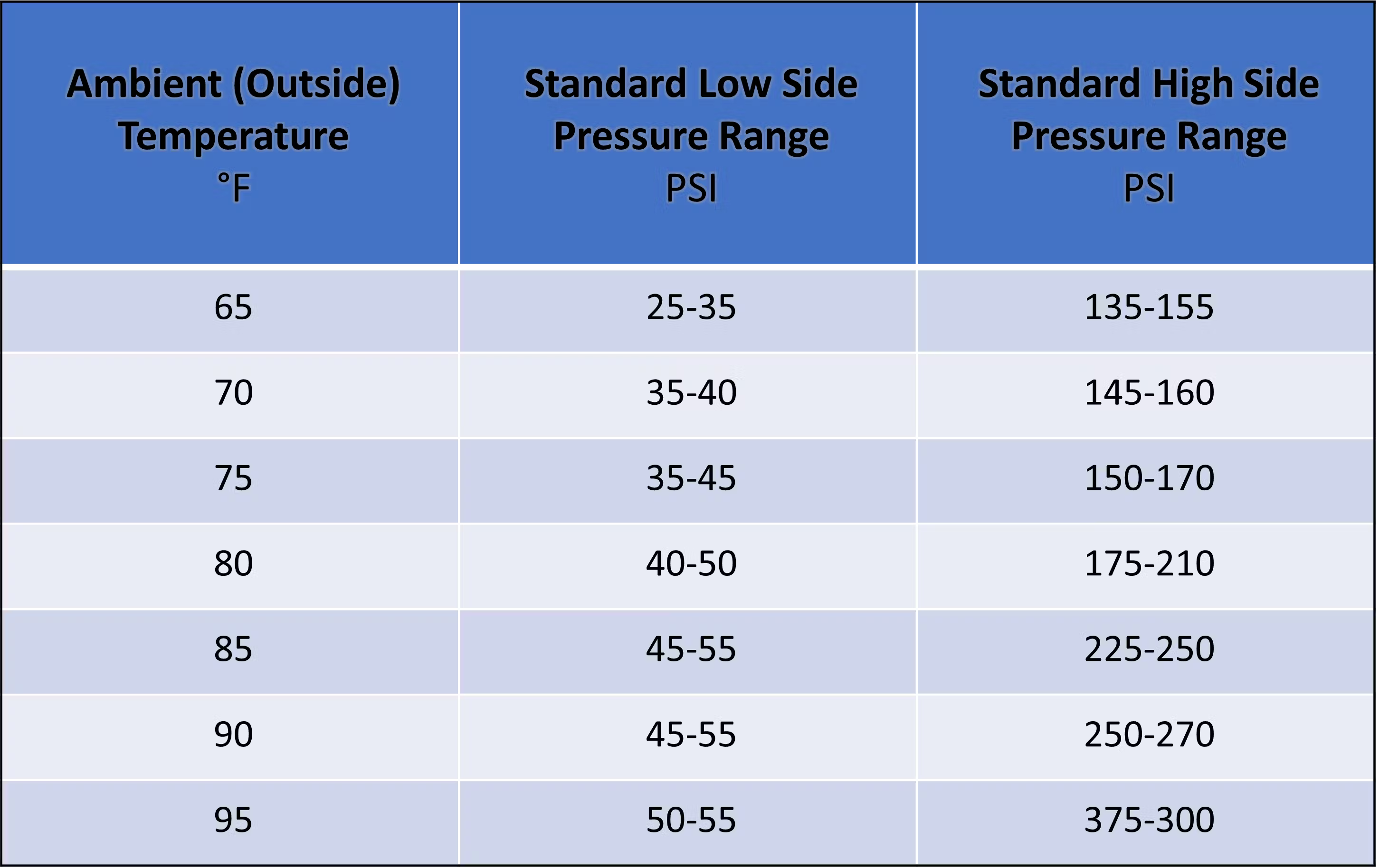
R134a System Pressure Chart A/C Pro®
During air conditioning mode, the pressure on the vapor line of an R-410A system will be somewhere between 102 to 145 PSIG. If the system had R-22, the vapor pressure would be between 58 to 85 PSIG but these pressures will be dependent on the wet bulb temperature inside the building and the ambient temperature outside the building.